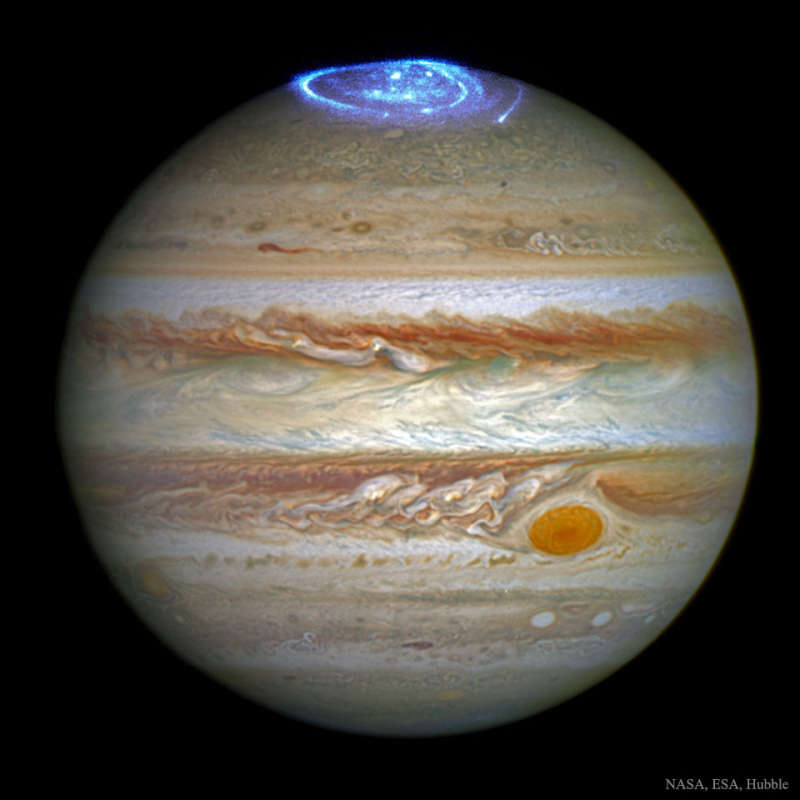
|
Explanation: Jupiter has aurorae. Like Earth, the magnetic field of the gas giant funnels charged particles released from the Sun onto the poles. As these particles strike the atmosphere, electrons are temporarily knocked away from existing gas molecules. Electric force attracts these electrons back. As the electrons recombine to remake neutral molecules, auroral light is emitted. In the featured recently released composite image by the Hubble Space Telescope taken in ultraviolet light, the aurorae appear as annular sheets around the pole. Unlike Earth's aurorae, Jupiter's aurorae include several bright streaks and dots. Jupiter's Great Red Spot is visible on the lower right. Recent aurorae on Jupiter have been particularly strong -- a fortunate coincide with the arrival of NASA's Juno spacecraft at Jupiter last week. Juno was able to monitor the Solar Wind as it approached Jupiter, enabling a better understanding of aurorae in general, including on Earth.
|
January February March April May June July August September October November December |
| ||||||||||||||||||||||||||||||||||||||||||||||||
NASA Web Site Statements, Warnings, and Disclaimers
NASA Official: Jay Norris. Specific rights apply.
A service of: LHEA at NASA / GSFC
& Michigan Tech. U.
Based on Astronomy Picture
Of the Day
Publications with keywords: Jupiter
Publications with words: Jupiter
See also:
- APOD: 2025 December 14 Á Juno Flyby of Ganymede and Jupiter
- APOD: 2025 May 25 Á Beneath Jupiter
- Painting with Jupiter
- APOD: 2025 April 2 Á Jupiter and Ring in Infrared from Webb
- APOD: 2025 March 9 Á Cyclones at Jupiters North Pole
- APOD: 2025 February 16 Á Perijove 11: Passing Jupiter
- Stereo Jupiter near Opposition
